Aquatic Feed
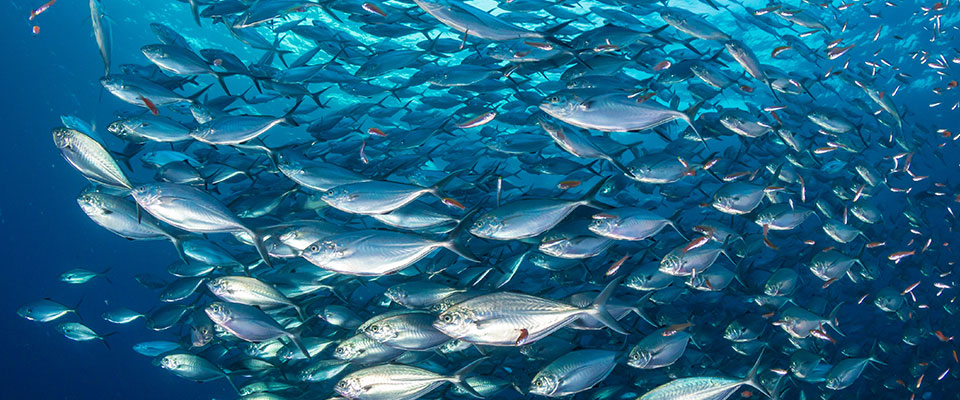
From Japan to the world with environmentally friendly technology which we have developed as a pioneer over the years.
We will contribute to the development of aquaculture by delivering a "safe and reliable" aquatic feed with feed development, production and sales that meets the needs of our customers.
Increasing demands for aquatic feed and its roles
Fish such as trout, carp, Ayu sweetfish, Japanese eel, red sea bream, yellowtail, amberjack and Kuruma prawn are essential to Japanese food culture. Most of them are farmed. At present, compound feeds are becoming the main feed for farmed fish due to reasons such as the reduction in the amount of wild fish used as feed, and environmental preservation of aquaculture farms. In addition, demand for compound feeds is increasing due to the needs for stable supply, health and nutrition management of farmed fish, and quality improvement.
FEED ONE contributes to the aquaculture industry by developing and providing aquatic feed that meets the needs for a wide variety of fish species in Japan and overseas.

A variety of compound feeds
The feed fed to farmed fish is of 3 types - mash feed used for kneaded eel feed or moist pellets (MP) as to be mixed with frozen fish, dry pellets (DP) that are used alone with the optimal nutritional design for each fish species, and extruded pellets (EP) that have improved digestion and absorption of raw materials by processing at high temperature and pressure.
Solid feed is in the form of granules, crumble or pellets according to the target fish.
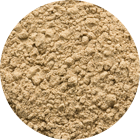
Powdered feed that is mainly used for moist pellets for marine fish, and kneaded feed for eel.
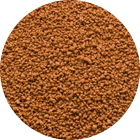
Special feed made by a flow coater. Mainly used as feed for fish fry.
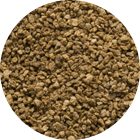
It is molded by a crumbler. There are EP crumbles and DP crumbles.
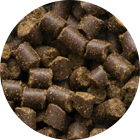
It is molded by a pellet machine. It is used for a wide variety of fish species.
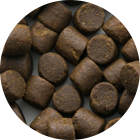
It is molded by an extruder. It is suitable for large diameter pellet and high fat feed.
FEED ONE's aquatic feed
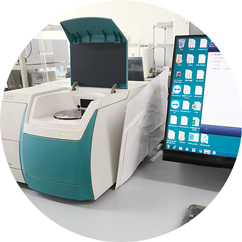
The feed we provide to our customers is made from raw materials that are domestically produced as well as imported from overseas which meet our strict quality standards. The feed is designed to meet the nutritional needs of farmed fish and feeding management policy with technologies that we pioneered, as well as the latest knowledge and research results.
We produce high-quality, safe and reliable compound feeds based on "advanced manufacturing technologies" and "HACCP control methods and thorough quality control" in the manufacturing process, and provide a stable supply of products to satisfy our customers.
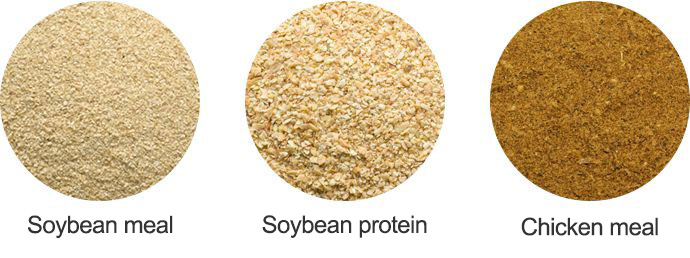
In recent years, it has become necessary to reduce fish meal by using alternative raw materials, as a shortage of fish meal is expected due to an increase in food demand worldwide, a decrease in resources, and an increase in aquaculture production.
We were the first to commercialize it based on field tests as early as 2007, improving breeding performance, which was a weakness of low fish meal feed, and achieved fish growth comparable to that of conventional products.
Going forward, we will continue to work on the gradual reduction of fish meal and the improvement of feeding technologies by using plant protein and unused raw materials with the goal of stabilizing feed prices, and further improving feeding performance.
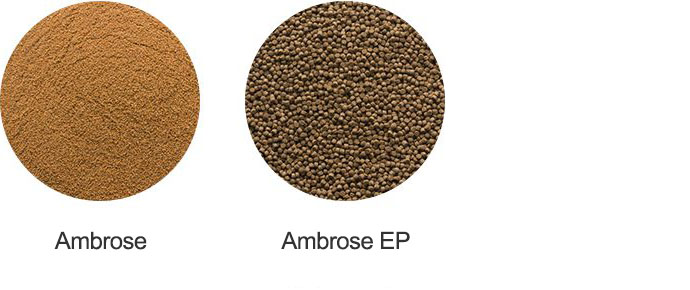
There are a wide variety of fish species for aquaculture, not only domestically but also overseas. Our feed for fish fry has a great selection for both marine fish and freshwater fish, so that it can respond to the needs of diversifying farmed fish species, and has received high praise both in Japan and overseas. Regarding product development, our research department has been playing a central role in conducting joint research with various research institutes and universities, and our affiliate that produces fish seed has been carrying out field tests to continually strive to satisfy nutritional requirements, palatability, digestibility and physical properties suitable for each fish species. We also have a full-time staff dedicated to fish seed production, so we are able to provide various relevant information. We will continue to incorporate future knowledge into our products to satisfy our customers.
HATCHERY FEED FOR LARVAL FISH Ambrose
Ambrose is the food of the gods, and eating it is said to provide immortality.
The name expresses our desire for fish larvae to grow up healthy.
The advantages of Ambrose
Well-suited nutritional value for larval and juvenile fish
- 1Ambrose 100 through 600 are formulated to achieve excellent growth, with an emphasis on palatability.
- 2Ambrose 800 is designed with a higher emphasis on growth.
- 3Balanced fatty acid composition using DHA-rich oil helps the rapid growth of larval fish.
- 4The amounts of vitamins C and E are significantly enhanced in comparison with those of grower feed.
- 5Added taurine improves larval fish's growth and body color, such as barramundi, gropers, seabass, breams, pompano, snappers, kingfish, yellowtail, amberjack, trevallies, puffers, flounders, cobia, etc.
Ideal physical properties of the granule for each growth stage
- 1Ambrose 100 and 200 are adjusted to prevent lumps from forming when feeding so that the product spreads over the entire water surface evenly.
- 2Ambrose 400 through 800 is adjusted to descend slowly (adequate settling velocity) in the water.
- 3It also possesses excellent water stability, so it does not cloud rearing water, and residual feed is easy to remove.
Precautions when feeding
- 1We recommend frequent feedings of small amounts each, such as by using an automatic feeder.
- 2Make sure that the water quality does not deteriorate due to the accumulation of residual feed and feces on the bottom of the tank, and be sure to clean the bottom as needed. Also, remove oil film from the water surface as needed to help the feed spread easier across the surface of the water.
- 3Increase the water exchange rate to higher than when feeding only live feed.
- 4It is advisable to smoothly switch from artemia to Ambrose by keeping the rearing water free from artemia when Ambrose is fed during such a transition.
- 5It is possible to smoothly switch between sizes by mixing the currently used size with the next size for several days.
The properties of Ambrose
- 1Particle size and Nutrition facts
| Particle size | 100 | 200 | 400 | 600 | 800 |
|---|---|---|---|---|---|
| Size (μm) | 80~230 | 230~420 | 420~650 | 650~1000 | 820~1350 |
| Crude Protein (min.) | 53.0% | 52.0% | 51.0% | ||
| Crude Fat (min.) | 8.0% | 8.0% | 8.0% | ||
Packaging
- Ambrose 100 and 200
Outer packaging:5kg cardboard box
Inner packaging:1kg/bag x 5 bags (aluminum laminated bag with zipper; nitrogen-filled packaging) - Ambrose 400, 600, and 800
Outer packaging:10kg cardboard box
Inner packaging:2kg/bag x 5 bags (aluminum laminated bag with zipper; nitrogen-filled packaging)
Storage precautions
- 1Store the product away from high temperatures, high humidity, and direct sunlight.
- 2After opening it, store it in the refrigerator and use it as soon as possible.
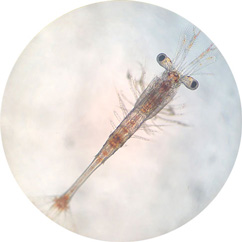
The production of farmed fish has increased significantly due to the improvement of food consumption habits overseas, and the change in eating habits. Along with the geographical expansion of aquaculture, the feed that "cultivates and breeds" farmed fish that we pioneered for many years has now expanded overseas, and is highly acclaimed.
